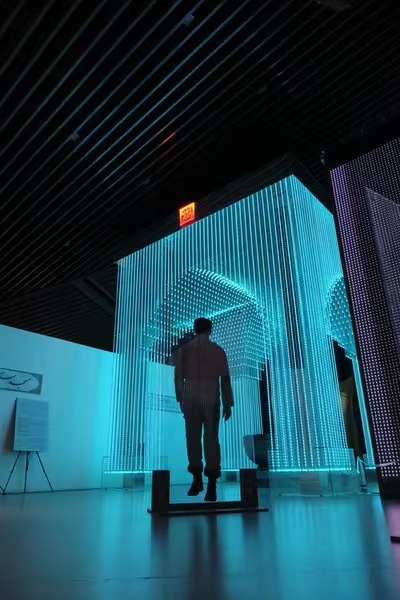创新背景
根特祭坛作品最初由12块嵌板组成。两个侧翼部分原本由四个嵌板组成,两边都涂了漆,在节日期间可以完全打开,露出中央的四个嵌板。几个世纪以来,这幅画几乎遭到破坏,并在20世纪40年代被纳粹没收。
创新过程
来自伦敦大学学院和杜克大学的研究人员使用了从Van Eyck兄弟的根特祭坛画获得的技术图像,这幅15世纪的大型祭坛画位于比利时圣巴沃大教堂,是国家美术馆参与的一项更大的研究合作的一部分。
这篇论文名为“艺术调查的人工智能:面对分离根特祭坛作品x射线图像的挑战”,展示了学者们如何使用一种新开发的算法来研究混合x射线图像,其中包含了这幅画的双面面板的特征,科学家将其解构为两幅清晰的图像。
这些图像是皇家文化遗产研究所(KIK-IRPA)使用不同成像技术获得的一套全面的高分辨率图像的一部分,作为祭坛壁画正在进行的保护的一部分,提供了丰富的数据来询问和解释。

这种方法表明,以深度学习为动力的人工智能技术可以用于潜在地解决艺术调查中出现的挑战,这种类似的以人工智能为导向的方法的发展对揭示绘画中其他隐藏特征的能力的影响显而易见,比如早期隐藏的设计。
x射线图像是检查和修复画作的一个有价值的工具,因为它们可以帮助确定作品的状态,并提供对艺术家技术的洞察。然而,x射线的穿透性意味着在其路径上的一切都会产生图像,这是有信息的,但会产生难以解释的图像。这对于两面都画的画板,或者艺术家重复使用画布的画板来说尤其如此。通过分离复杂的x射线图像,新算法使艺术历史学家、文物保护者和遗产科学家能够更好地理解古代大师的画作,而揭示的信息可以帮助专家保护和修复精美的艺术品。

深度学习方法目前正被用于应对医疗保健、金融科技、国防和安全等其他领域出现的挑战。
英国皇家文化遗产研究所(KIK-IRPA)根特圣像保护项目负责人Hélène Dubois表示,人工智能在x射线图像处理方面的应用将为解密复杂的技术图像提供非常有用的工具。木质支撑、地面和油漆层的结构缺陷可以得到更精确的诊断。这些图像也将有助于理解梵·艾克兄弟的技巧,以及这一独特杰作在连续创作过程中所发生的变化。这种对传统x射线使用的新发展在保护不可替代的艺术作品方面具有巨大的应用潜力。
根特祭坛文物保护团队和参与这个具有挑战性的项目的科学家们下一步将研究该算法如何可能导致支持他们保护工作的新见解。
创新价值
通过分离复杂的x射线图像,新算法使艺术历史学家、文物保护者和遗产科学家能够更好地理解古代大师的画作,而揭示的信息可以帮助专家保护和修复精美的艺术品。
这一发现将进一步加深我们对艺术杰作的认识,并为艺术调查、保护和展示提供新的契机。
创新关键点
以深度学习为动力的人工智能技术可以用于潜在地解决艺术调查中出现的挑战,这种类似的以人工智能为导向的方法的发展会对揭示绘画中其他隐藏特征的能力产生影响。
创新主体
伦敦大学学院(University College London,简称:UCL ),1826年创立于英国伦敦,是一所公立研究型大学,为伦敦大学联盟的创校学院、罗素大学集团和欧洲研究型大学联盟创始成员,被誉为金三角名校和“G5超级精英大学”之一。
UCL是伦敦的第一所大学,以其多元的学科设置著称,于REF 2014 英国大学官方排名中,位列全英之冠,享有最多的科研经费。UCL的医学、解剖学和生理学、建筑学、教育学、考古学、计算机科学、计算金融学等学科排名均位居世界前列,与LSE并称为“英国现代经济学研究的双子星”;其人文学院颁发的奥威尔奖则是政治写作界的最高荣誉。
Using AI to reveal new details about old master paintings
Researchers from University College London and Duke University used technical images obtained from the Van Eyck brothers' Ghent altarpiece, a large 15th-century altarpiece in the Cathedral of St Bavo, Belgium, as part of a larger research collaboration involving the National Gallery.
The paper, "Artificial Intelligence for Artistic Investigation: Facing the Challenge of Separating X-ray Images of the Ghent Altar Work," shows how scholars used a newly developed algorithm to study hybrid X-ray images that incorporate features of the painting's two-sided panel, which scientists deconstructed into two sharp images.
These images are part of a comprehensive set of high-resolution images obtained by the Royal Institute of Cultural Heritage (KIK-IRPA) using different imaging techniques as part of the ongoing conservation of the altar frescoes, providing a wealth of data to interrogated and interpreted.
This approach demonstrates how deep learn-powered AI techniques can be used to potentially address challenges that arise in art investigations, and the impact of the development of this similar AI-oriented approach on the ability to reveal other hidden features in paintings, such as early hidden designs, is evident.
X-ray images are a valuable tool for examining and restoring paintings, as they can help determine the condition of the work and provide insight into the artist's technique. However, the penetrating nature of X-rays means that everything in their path produces images, which are informative but produce images that are difficult to interpret. This is especially true for panels that are painted on both sides, or where the artist reuses the canvas. By separating complex X-ray images, the new algorithm enables art historians, conservators and heritage scientists to better understand old master paintings, and the information revealed can help experts protect and restore exquisite works of art.
Deep learning methods are currently being used to address challenges emerging in other areas such as healthcare, fintech, defense, and security.
Helene Dubois, head of the Ghent ICONS Conservation Project at the Royal Institute of Cultural Heritage (KIK-IRPA), said the use of AI in X-ray image processing will provide a very useful tool for decrypting complex technical images. Structural defects in wood supports, floors and paint layers can be more accurately diagnosed. The images will also help to understand the Van Eyck brothers' technique and how this unique masterpiece has changed over the course of its successive creation. This new development in the use of traditional X-rays has great potential for applications in the protection of irreplaceable works of art.
The Ghent Altar conservation team and the scientists involved in this challenging project will next investigate how the algorithm might lead to new insights to support their conservation efforts.
智能推荐
人工智能+古文字学 | 人工智能帮助研究古文字文本
2022-07-28将人工智能运用于古文字学领域,帮助重建古老的文字文本,探索人类的历史文明。
涉及学科涉及领域研究方向AI+金融学 | 新型高精度翻译金融领域文件的引擎
2022-11-22研究人员开发的这种新的基于AI的高精度翻译引擎,可以在日语和英语之间翻译金融部门的文件。
涉及学科涉及领域研究方向AI算法 | 利用激光清除树叶联系,创新森林防火方法
2022-06-29将激光清除树叶的技术引入森林火灾燃烧媒介切断,控制森林火势蔓延,有效进行森林保护和消防事业。
涉及学科涉及领域研究方向使用人工智能鉴定出新的多发性硬化症亚型
2022-08-02伦敦大学学院的科学家们使用人工智能(AI)确定了三种新的多发性硬化症(MS)亚型。研究人员表示,这一突破性的发现将有助于识别那些更有可能出现疾病进展的人,并有助于更有效地针对性治疗。
涉及学科涉及领域研究方向